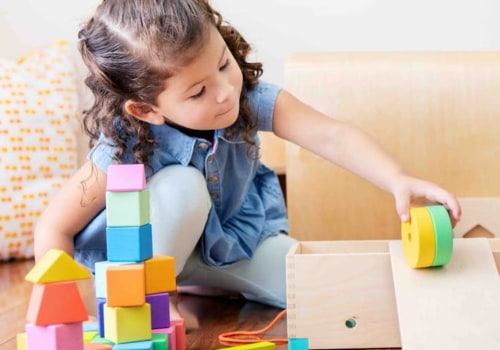As a parent, one of the top priorities is ensuring the safety and well-being of our children. This includes the toys they play with, as they often end up in their mouths. With the rise of plastic toys in the market, many parents are left wondering if they are truly safe for their children. However, there is a better alternative that not only provides entertainment but also has hygienic benefits - wooden toys.Wooden toys have been around for centuries and have stood the test of time.
But what makes them more hygienic than plastic toys? The answer lies in the natural properties of wood. Wood has antimicrobial properties that can destroy viruses and bacteria, making it a safer option for children to play with. Additionally, the porous surface of wood deprives bacteria of the moisture they need to survive, making it a self-cleaning material. When it comes to cleaning and disinfecting wooden toys, it is important to avoid using harsh chemicals or disinfectant wipes. These products can be toxic to children and can cause harm if ingested.
Instead, opt for a 100% organic vinegar diluted in water. Not only is this a safe and natural option, but it also helps prolong the life of your wooden toys.It is recommended to clean wooden toys regularly, especially if they come into contact with your child's mouth. This will prevent any potential infections and ensure that your child is playing with clean and safe toys. However, it is important to note that wooden toys should not be cleaned in the dishwasher or bathroom as this can damage the wood.
Instead, simply clean the surface with water and vinegar solution or use a thick sponge for tougher stains. The natural antibacterial quality of wood also means that wooden toys are less likely to harbor germs compared to plastic toys. Plastic toys, on the other hand, allow moisture and bacteria to settle on the surface, making it easier for them to be transmitted from one child to another. This is why plastic toys often end up in the trash much earlier than wooden toys. Aside from being more hygienic, wooden toys also have a longer lifespan compared to plastic toys. With proper care and cleaning, they can last for years and even be passed down to younger siblings or future generations.
This not only saves money but also reduces waste in the environment. When it comes to cleaning wooden toys, it is important to follow the manufacturer's care instructions for specific information about your items. Avoid using harsh chemicals or disinfectants as they can be harmful to children. Instead, opt for natural and safe cleaning methods. One of the best ways to dry wooden toys after cleaning is by placing them under the sun. The sun is often called a natural disinfectant and can help kill any remaining germs on the surface of the toy. Wooden toys may come at a higher price compared to plastic toys, but they are a worthwhile investment.
As any parent who has replaced their child's plastic toys with wooden ones knows, the quality and durability of wooden toys far surpass those of plastic toys. If your child is sick, it is important to wash the toys they have been playing with to prevent the spread of germs. This is especially crucial for younger children who have a natural tendency to put everything in their mouths. For painted or varnished wooden toys, simply wash them with soap and water or natural dishwashing liquid before rinsing with water and wiping with a sponge soaked in white vinegar.



